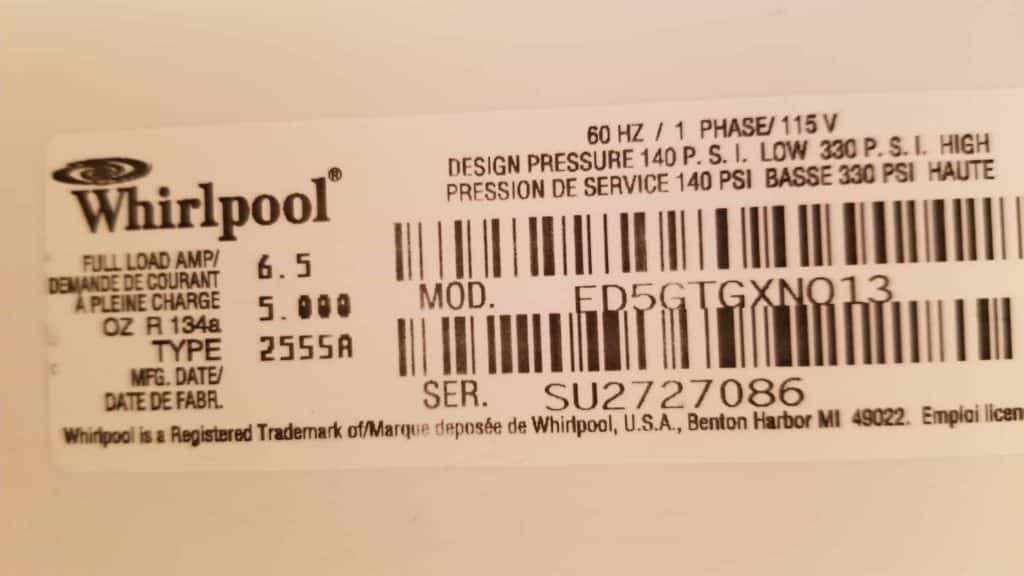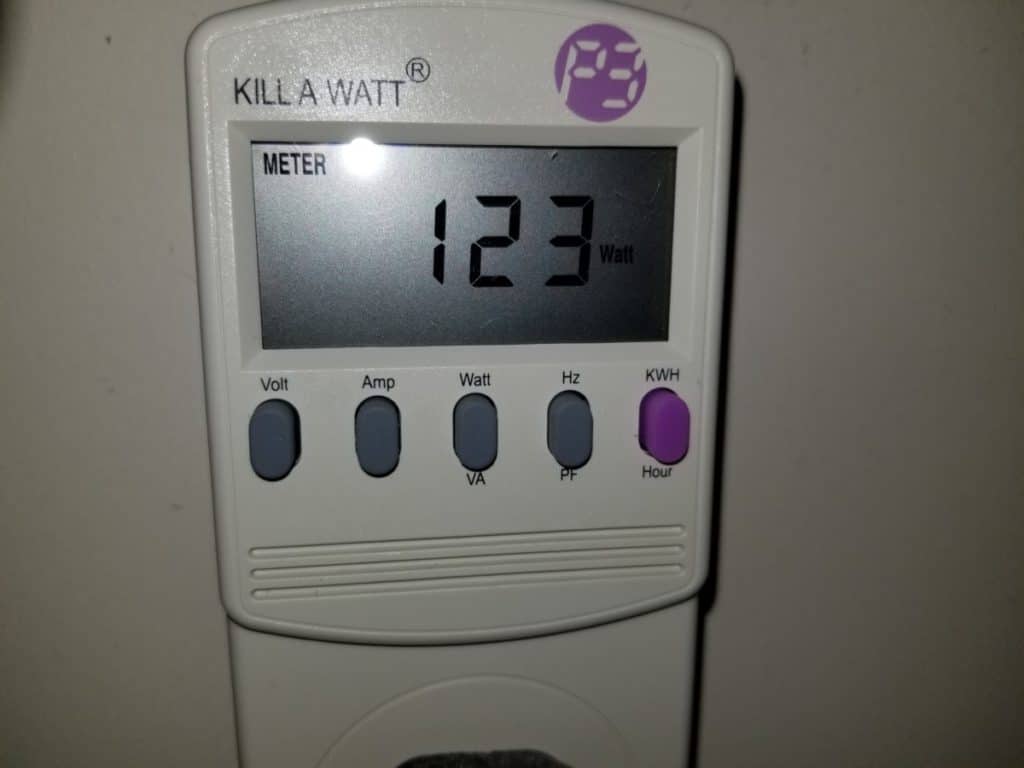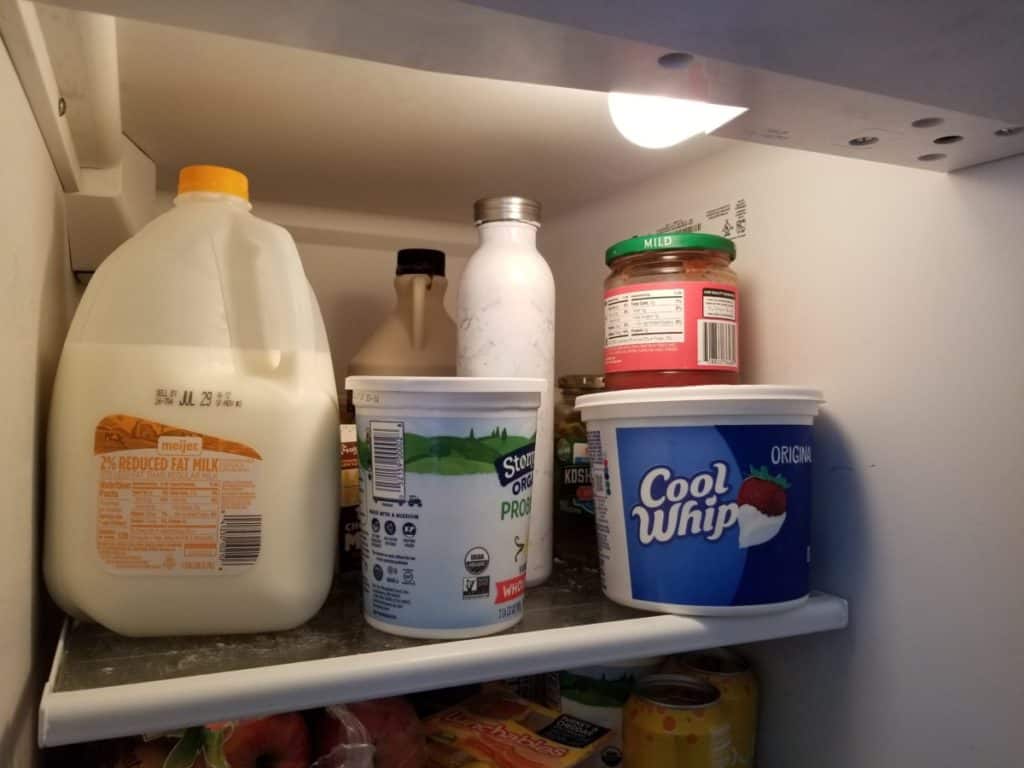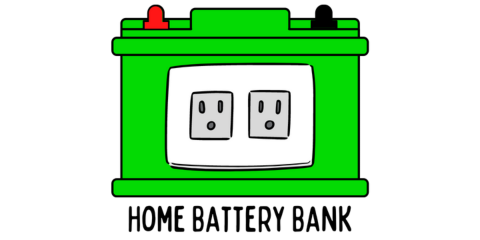Have you ever lost power at the most inconvenient time, with a fridge full of food, and wondered if, and how long, your car battery could power your refrigerator?
When the power goes out one of the things we put the most priority on is how to keep the refrigerator running.
Can a Car Battery Power a fridge?
A standard car battery can power a fridge for around 5 hours with 20-minute compressor cycles per hour and still have a chance to start the car. It is best to run the car with the battery when doing this.
When it comes to running your fridge from your car battery, there’s a right way and a wrong way of doing such a task.
Risks include burning up your refrigerator’s compressor and discharging your car battery so that it won’t start your car are definitely possibilities and can be avoided with a little know-how.
I’ll cover how long a car battery can power a fridge (disconnected and connected to the car), if it’s even worth it, the best option for the money, and finally, some handy tips to minimize energy usage and heat loss from your fridge when the power goes out.
How Long Can a Car Battery Power a Fridge when Disconnected from the Car?
We’re going to break this down into all of its component parts and then do the math at the end (or you can click here to skip right to it). I’ll start with the power requirements of the fridge, the power available from the battery, and the inverter to be used.
What are the Power Requirements of a Typical Fridge?
Ultimately the power requirements of a fridge are going to be specific to that particular unit. Throughout the years they keep getting more and more efficient, so you’ll have to check your specific model to get the actual number.
Units made in the last 10 years are going to be especially energy efficient when compared to older models. For the example in this article, we’re going to use the numbers from my home refrigerator which was made probably around 2007 which is when my house was built.
If you open up the door on my unit, along the sidewall is a sticker with the hourly energy requirements.

As you can see from the photo, it shows that it requires 6.5 Amps at 115-volts AC (Alternating Current). Amps * Volts = Watts, so the running watts (when the compressor is running to cool off the inside of the fridge) are 6.5 * 115 = 747.5 (per hour if running the compressor for the full 60 minutes).
Good news? When I actually tested it with a Kill a Watt testing unit, it actually only read 143 watts and gradually dropped throughout the next 15 minutes until it was at 120 watts. So, we’re going to go with an average of 130 watts. When I tested mini-fridges and deep freezers, they also tested in the same range! The degree to which your fridge will be below the requirements listed on the sticker will need to be tested on a case by case basis, but using 130-150 watts as your base number should be pretty safe. You can easily test yours with this affordable and handy device from Amazon.

It’s important to note that refrigerators are not constantly running to keep cool. The Department of Energy estimates that they run about ⅓ of the time, or about 8 hours per day. Broken down further, this would be about 20 minutes per hour. The running time is of course affected by how often you open the door, the ambient temperature of your house, how full or empty the fridge is, etc.
Noting that a fridge only runs about ⅓ of the time, we arrive at roughly 43 watts likely needed in an hour if the fridge is only kicking on for 20 minutes (130 / 3 = 43.33 watts)
Next we’ll take a look at how much energy a car battery has to offer.
How Much Energy can I get out of a Car Battery?
This one is a little tricky since car batteries are not rated in Ampere Hours (AH) which are the standard unit of measure when trying to make estimations of power outputs over a specific duration of time.
This is because car batteries are engineered to be “starter batteries”, which means that they are designed to release a quick discharge of electricity to start your car and then be immediately recharged while you drive by the car’s alternator.
Car batteries are rated in CCA (cold cranking amps).
Car batteries are not designed or engineered to “deep cycle” as a normal method of use (discharge 50-100%) like some boat or golf cart batteries. Keep in mind that deep cycling car batteries will reduce their lifespan.
You can probably only run your car battery to it’s absolute limit about 10-12 times before it will fail to work for you, or about 100 times or so if you only drain about 50% of the energy.
With all of this being said, it is generally agreed upon that a typical car battery probably has the equivalent of 45-60AH.
We’ll go with 50AH in this example. 50AH * 12V = 600 watts hours. The 12 comes from the fact that we’re talking about a 12-volt battery.
If you want a closer idea of your particular car battery’s amp hours, I have a table below from another article that I wrote. Just find the CCA (cold cranking amps) or RC (reserve capacity) on the sticker on your battery the ampere-hours (AH) will be posted below for the number you found.
Amp Hour Estimates Based On Cold Cranking Amps or Reserve Capacity
| If Your Sticker Reads: 200-315 CCA, or 40-60 RC | If Your Sticker Reads: 315-550 CCA, or 60-80 RC | If Your Sticker Reads: 550-1,000 CCA, or 80-190 RC |
| 36 - 46.2 AH | 46.2 - 58.8 AH | 58.8 - 111 |
What Type of Inverter do you need to run your Fridge from your Car Battery?
Should you use a modified or pure sine wave inverter for powering your fridge?
A modified sine wave inverter will get you through most tasks that you’ll need done during a power outage, but when working with compressors (such as the one in your fridge that kicks on when it needs to cool off) you’ll really want to stick with a pure sine wave inverter to minimize overheating of the compressor.
Modified sine wave inverters deliver the required voltage to the fridge, but it is a “dirty” or “choppy” version of it. When plotted on a graph, the sine wave will hit the correct peaks and valleys, but it will be in a stair pattern with a choppy climb up and down.

Compressors rely on a steady and clean wave of electricity to perform at their best, and the choppy electricity for a modified sine wave inverter can cause the compressor to overheat and eventually fail.
I’m not saying that a modified sine wave inverter will cause damage to your fridge’s compressor, but it is a risk you take by doing so.
If you absolutely want to use a 12-volt battery to power your fridge, you’ll want to invest in a pure sine wave inverter. These typically run about 3-4 times more expensive than a modified sine wave inverter and are quite the little investment.
When the alternative is buying a new fridge due to a failed compressor because you went cheap on the inverter, the cost doesn’t seem as bad though.
How Many Watts does the Inverter Need to be to Power a Fridge?
To play it safe, you’re going to want to go with an inverter that has at least 1000 running watts and a peak wattage around 1,500-2,000 watts.
Peak watts are important to take note of. While the actual running watts on my fridge ended up being 130, the starting watts — the amount needed to engage the compressor from a cold start — can be 3-7 times as high. Since that number is never known unless you have the expensive equipment to test it, it is best to play it safe and size up your inverter to leave room for error.
Online sources show it to not be uncommon for a fridge that runs at 130 watts to have starting watts of 1,200.

Also keep in mind that the longer the extension cord you use to connect the inverter to the fridge, the more voltage drop you’ll experience. That means that if you’re cutting it close with an inverter that has 1,200-1,500 starting watts if you start connecting long cords. The full voltage won’t be available to start the compressor.
IMPORTANT NOTE ABOUT INVERTERS: When using an inverter with a 12-volt battery (like your car battery), you’re going to only run at about 85% efficiency. This is just a fact of life when using one of these devices. So, whatever your final demand is by your fridge, you’ll need to divide that number by 0.85 to get the actual draw from the battery. Example: 130 watts from compressor / 0.85 = 152.9 watts actually being drawn from the battery to overcome the inefficiencies of the inverter and still deliver the 130 watts needed for the compressor.
Now, Let’s do the math and find out just how long a car battery can power a fridge!
As a recap, here’s the math again to keep it straightforward, and you can read above again to see how I got these numbers if you have any questions.
- Fridge requirements: 130 Watts (tested with Kill a Watt)
- Fridge only runs ⅓ of the time per hour, so: 130 Watts / 3 = 43 watts per hour (rounding). This also is 3.6 amps (43 watts/12 volts) (*Rounded)
- Car Battery: 12VDC * 50AH = 600 Watt Hours (keep in mind a car battery is a starter battery, not a deep-cycle battery and you will damage it by powering appliances for any length of time)
- Inefficiencies of the car battery with inverter will be about 15%, so: 43 watts / 0.85 = 50.59 watts being drawn from battery
Final Answer:
600 watt hours from Battery / 50.59 watts per hour by Fridge = 11.86 hours when running 20 minutes per hour until 100% discharge. It would be wise to only run it for 5-hourly cycles of 20-minutes each to still have a prayer at starting your car.
What Can we Learn from This?
As you can see from the above results, it’s possible but not the best idea to run your fridge from your car’s battery. Batteries run about $100+ and you’ll be flirting with shortening its lifespan and not being able to start your car if the need arises.
Not to mention you will want to make sure that you have a pure sine wave inverter so that you don’t risk ruining your fridge’s compressor. Replacing your fridge will probably be more expensive than the food that you’re worried about spoiling.
A pure sine wave inverter that is large enough to do the task will probably put you out about $150 to $200. The risk of ruining your battery and needing a replacement would be $100.
To sum it all up: Your car battery is not a heavy magic box that will reliably power your large appliances in a pinch. In fact, 50AH from a car battery has the same potential as about 1/2 of a quart of gasoline in a small generator (15 ounces).
If you’re going to go through with it anyway, keep the car battery in the car with the vehicle running and use as short of an extension cord as possible to power your fridge. That way the alternator is essentially acting as your generator.
How do you hook a car battery up to a fridge when removed from the car?
Simply hook the pure sine wave inverter to the battery (black clamp on negative, red clamp on positive), turn the inverter on, plug an extension cord into the inverter, and plug the fridge into the extension cord.
How Long can a Car Battery Power a Fridge when Connected to the Car?
In this scenario, all of the numbers will be the same from the above example. The main difference is that the car’s battery is still hooked up to the vehicle itself and you will have the car running at idle while trying to power the fridge.
When doing it this way, the car’s alternator is essentially powering your fridge (an impromptu generator, if you will) and at idle it will have more than enough amperage to power your fridge.
With the car running, hook the pure sine wave inverter to the battery (black clamp on negative, red clamp on positive), turn the inverter on, plug an extension cord into the inverter, and plug the fridge into the extension cord. Keep the cord as short as possible.
As long as you have a properly sized inverter (800-1,000 rated running watts / 1500-2,000 peak watts), you should have no problem running your fridge unless your car runs out of gasoline.
Keep in mind that while you need to leave your car running at all times when powering your fridge, you don’t need to be powering your fridge at all times.
Let the vehicle power your fridge for 20-30 minutes, and then as long as you’re not opening and shutting the fridge’s doors, you’ll be able to run it again every couple hours for the same amount of time. This will be more than enough to get you by, keep your food from spoiling, and your car from running out of gas prematurely.
Is it Worth it to Power a Fridge with a Car Battery?
If you’re going to do it, you will want to power your fridge when your battery is still hooked up to your car. The other way will just be a headache as you have to remove the battery from the vehicle, carry it inside, set it up, and you’re only going to get about 5 hours of use before you likely won’t get the car started again (far fewer hours if you factor in an older battery or one that hasn’t been maintained properly).
Also, when you consider the price of a pure sine wave inverter, which will ensure you don’t burn out your refrigerator’s compressor, you’re looking at around at least $150 – $200.
For under $400 you could pick up a nice inverter generator that would power your fridge, or certainly a conventional generator at that price (or even cheaper).
I think the price of this inverter generator (which delivers pure sine wave current) is a great deal on Amazon. Inverter generators are super quiet and they sip gasoline slowly!
So if you’re looking to not make a lot of noise and get the best bang for your buck with gasoline efficiency, that’s the route you want to take. This won’t power your central air, or well pump, but it should be able to handle most other things — just not at the same time.
For more on powering your fridge from a generator, you can check out my article here.
Power Saving and Heat Loss Tips for your Fridge when the Power is Out
- Turn off your ice maker when powering your fridge and freezer with a battery or generator to conserve energy usage.
- Switch out incandescent light bulbs inside the fridge for LED’s to also conserve energy usage or remove the bulb during a power outage.
- Make it common practice to keep frozen bottles of water in your freezer where you can find empty space. This will reduce your energy bill when you have power since the freezer won’t be trying to cool empty space, and when the power goes out you can move the frozen bottles into the fridge to keep things cool as you ration your power.
- Make sure your condenser coils are clean of dust and debris to maximize efficiency.
- Adjust the cool settings to just what is needed. A few degrees can make dramatic changes in energy consumption when you’re really cutting it close with inverters and generators.
